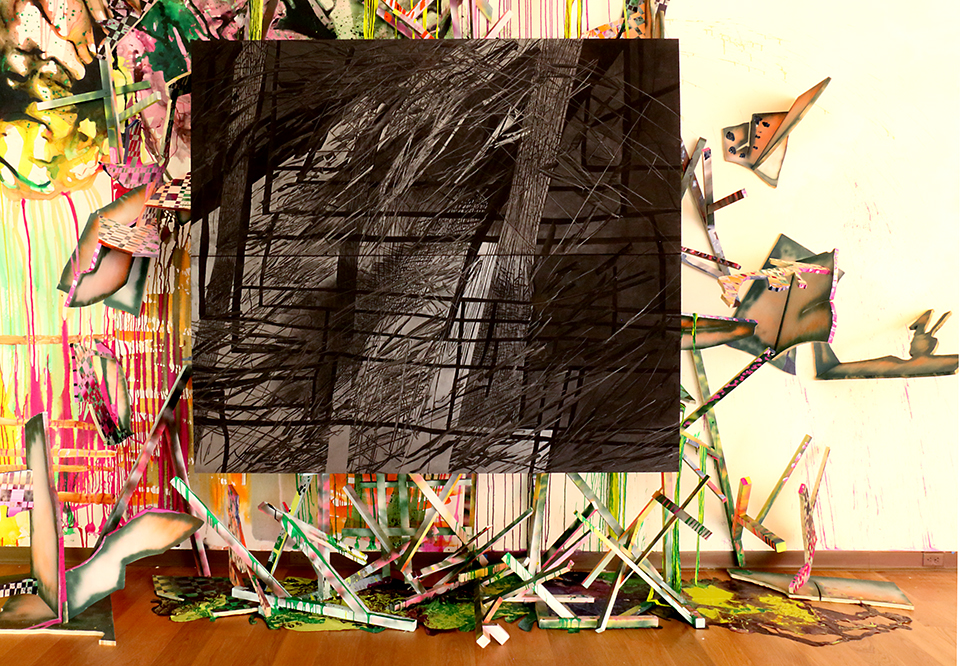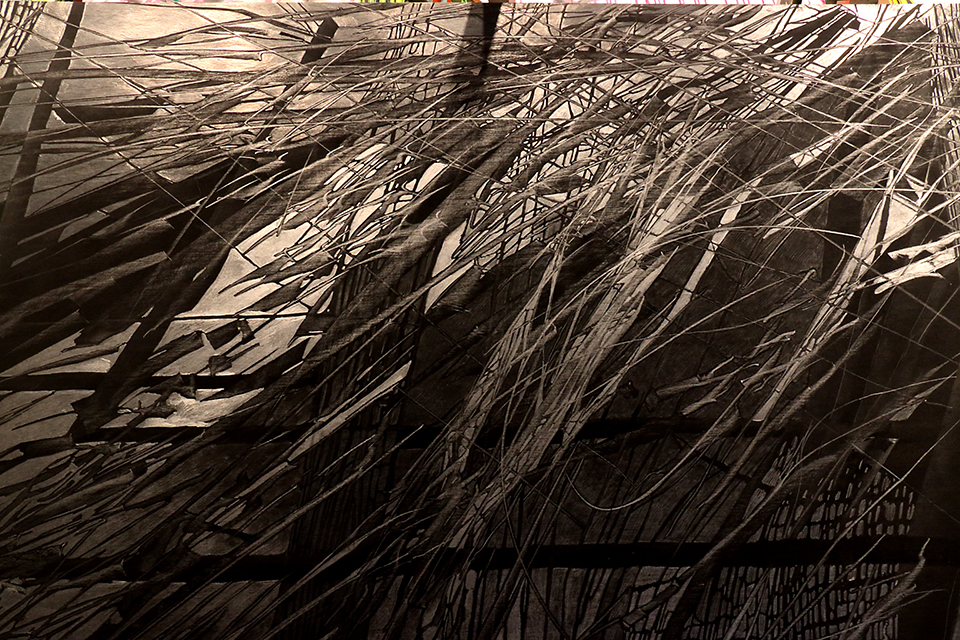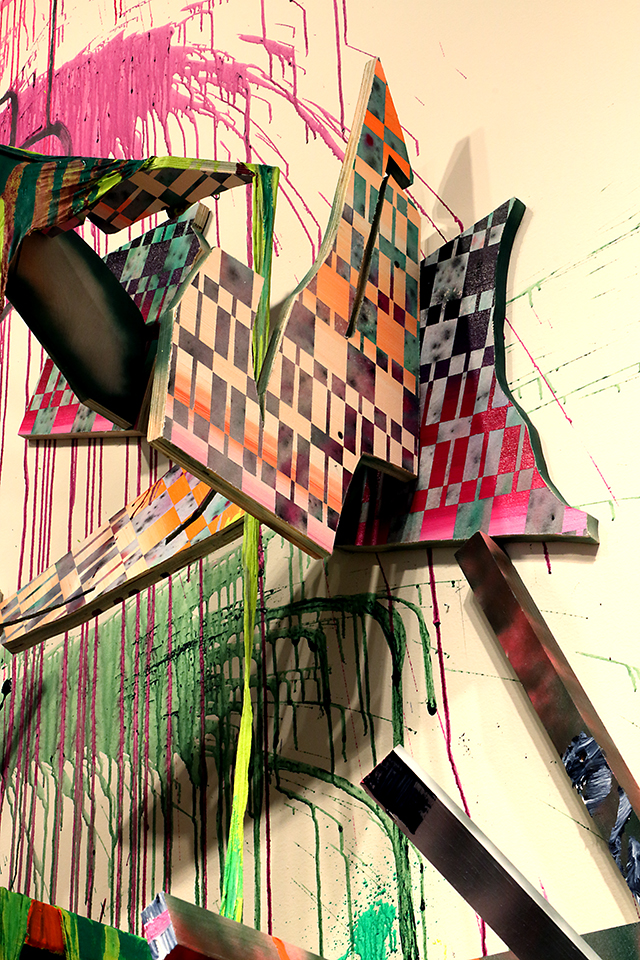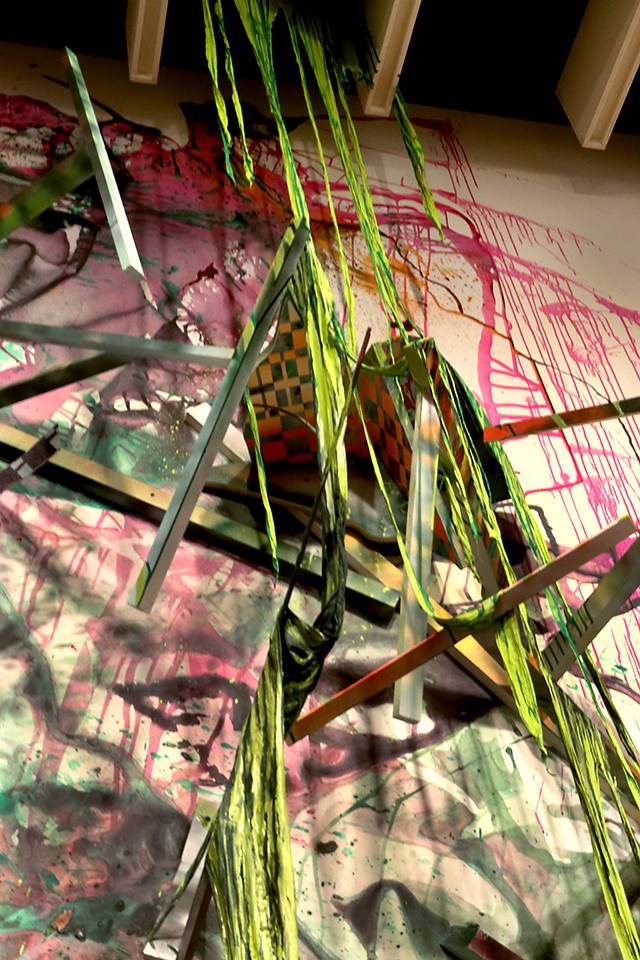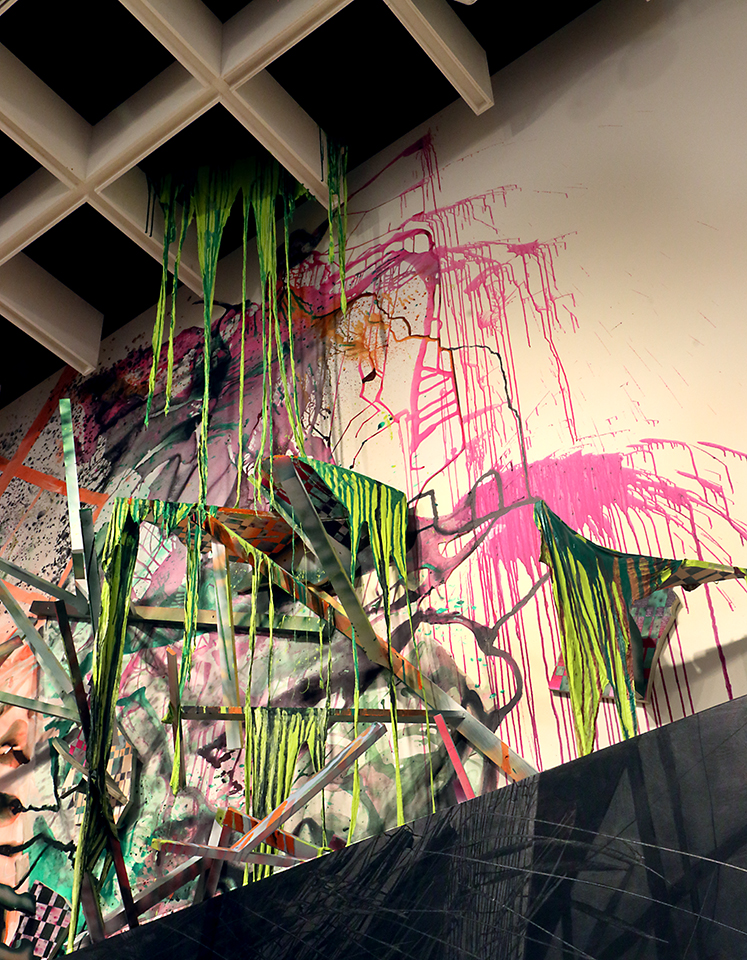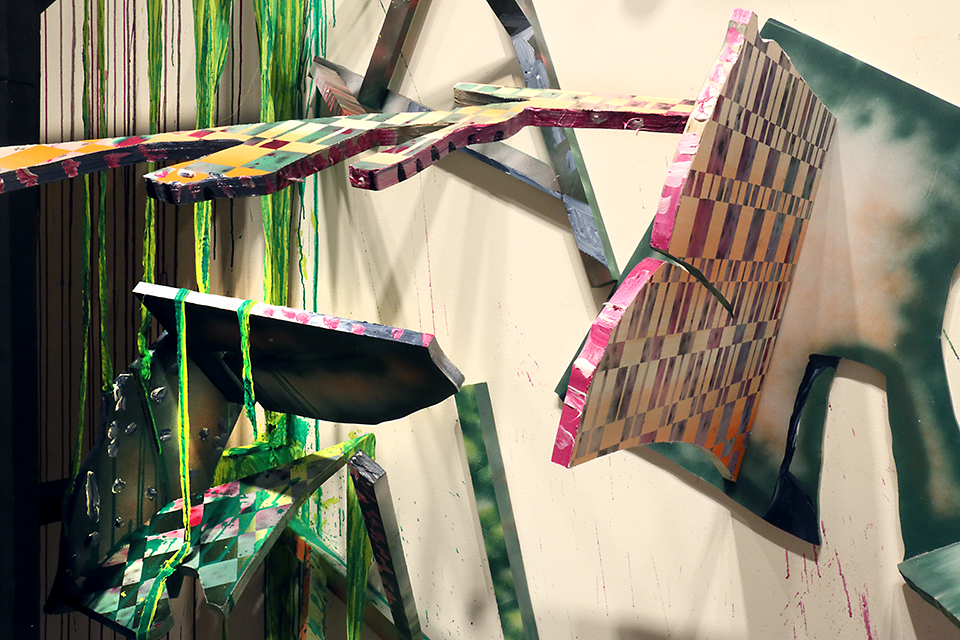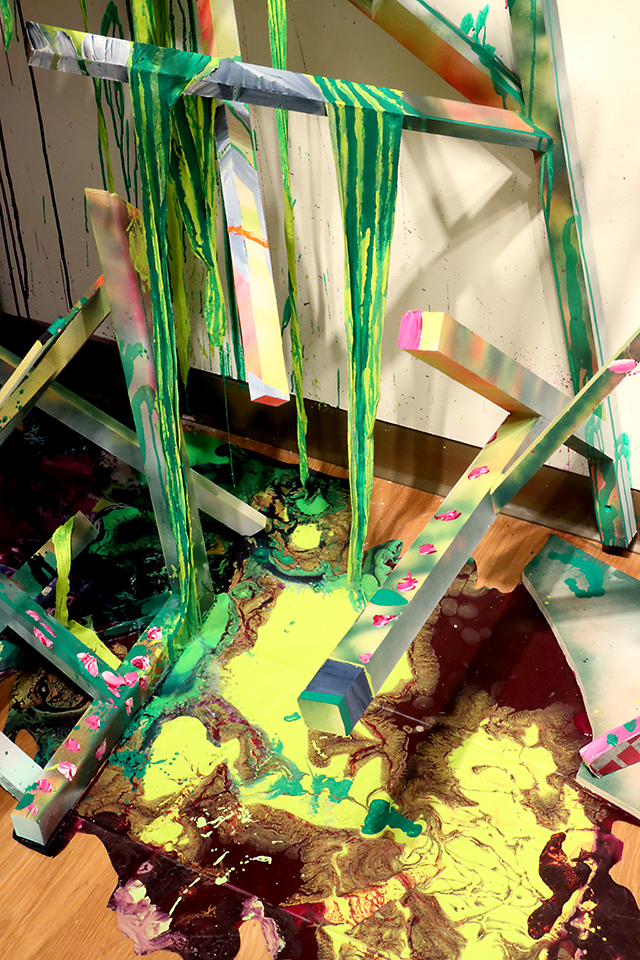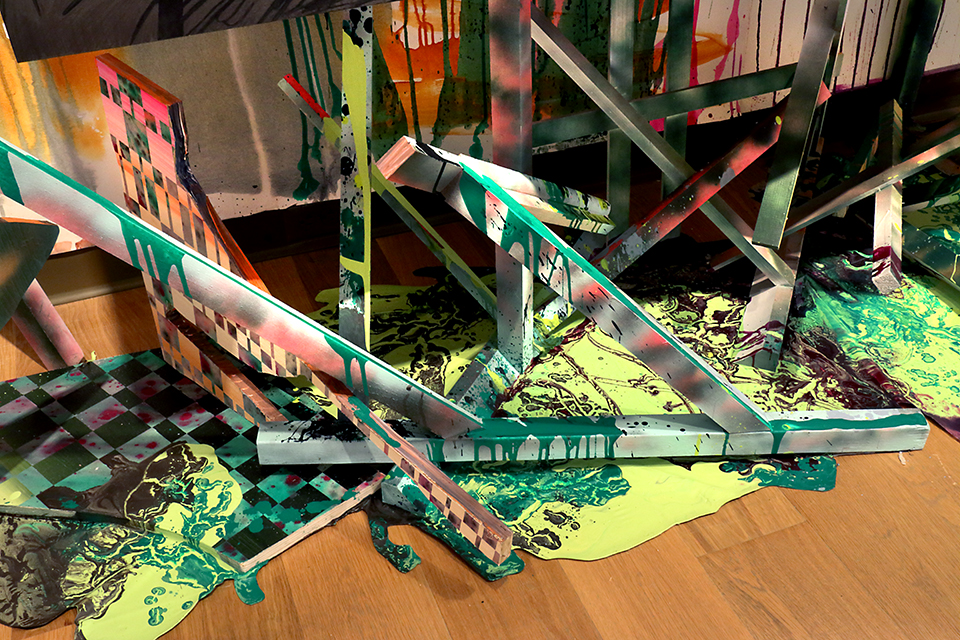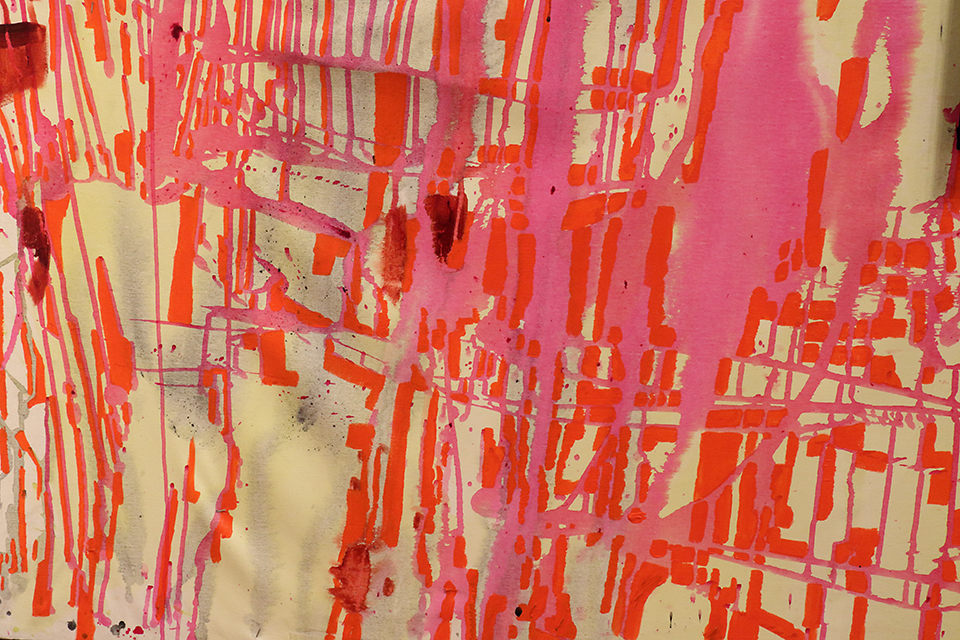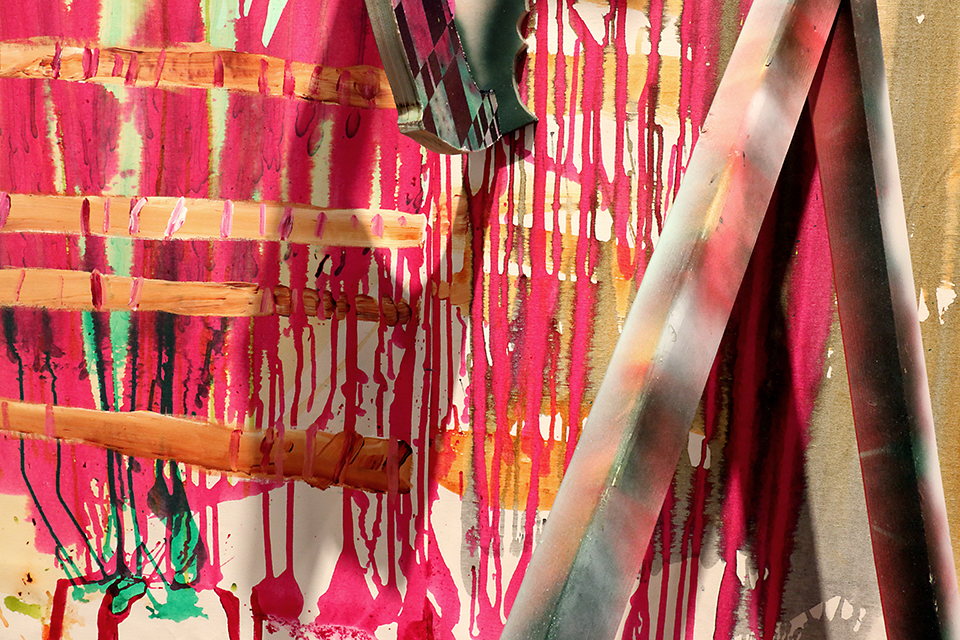The Forest Ravenous
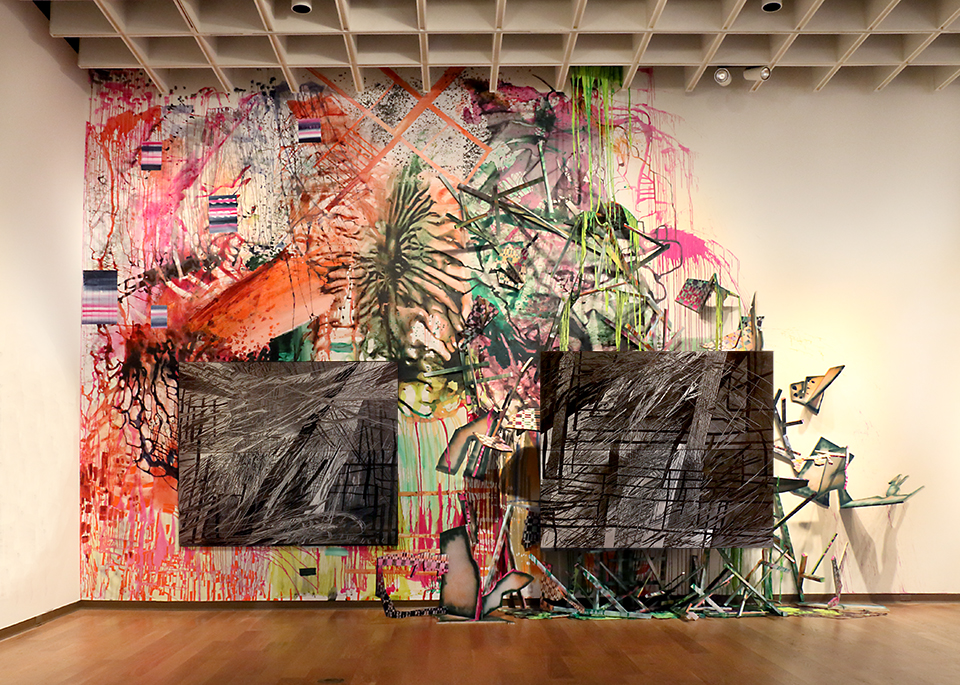
There is a story I was told as a child that I only have a vague but persistent recollection of now. In it, an intelligent and mischievous murder of ravens fly into town from a nearby forest and learn how to mimic human speech. They use this newfound ability to lure the townsfolk deep into the forest, following the ravens’ calls as they search for what they assume to be children crying for help.
This was the jumping off point for my installation The Forest, Ravenous for the Florida Prize in Contemporary Art at the Orlando Museum of Art. The forest exists outside the world of cultivation, and, much like abstract painting, is symbolically about the illogical. Theorists, such as J. E. Cirlot, define the forest as a symbol of the perilous aspects of the unconsciousness, that is, its tendency to devour and obscure reason, but continue further by explaining that it is a space that allows one to go inward and transform oneself. Clearly, to be surrounded and confronted by the illogical is a powerful thing, and I wanted to bring that into the gallery setting.
To begin the installation, I wanted to create a large-scale wall painting out of what I believe to be visual representations of certain sounds. Hearing is an abstract sense, and sound can be incredibly non-specific, especially if one is located in an unfamiliar environment like the wilderness. Visually, this highly-abstract wall painting accumulated a denseness and humidity of the sub-tropical forests I often find myself traveling in Florida.
Sculptural elements accumulate on the wall. Some are hard-edge geometric constructions. Others are Matisse-esque plywood shapes, whose forms are taken from the empty spaces in-between tree branches, essentially being the visual representation of shapes never meant to be seen. These structural components are a strange hybrid of the arboreal and the architectural, embodying a destroyed geometry collapsing from the grid of the ceiling or perhaps a wild, thriving natural occurrence slowly inching its way up the wall.
The two central paintings hold the wall like punctuation marks in this installation, shifting the pace and cadence of the larger wall work. The 6—8 ft panels are covered in layer upon layer of charcoal and graphite. The wild and swirling gestures crystalized on their surfaces shift and shimmer as the light changes, or as the viewer moves to a different vantage point in the gallery, presenting a quiet, intricate, slow-paced latency to the viewing experience contrasting with the immediacy and power of the larger installation. Painting, traditionally a window, now becomes architecture in its ability to redirect action, where the larger architecture of the museum is converted into window, presenting an energetic glimpse into forest-like wilderness.

